Seed And Forage Yield, And Forage Quality Determinants Of Nine Legume Shrubs In A Non-Tropical Dryland Environment

Authors:
The objective was to identify legume shrub species for development of agroforestry technologies based on seed and forage (leaves and twigs < 10 mm diameter)yield, and determinants of forage quality. Ten individual plants of Bituminaria bituminosa 'Ecotypes 1', B. bituminosa 'Ecotypes 2', Medicago citrina, and M. arborea from Spain; Colutea istria and Onobrychis aurantiaca from Syria; C. istria from Jordan; Chamaecytisus moths from Morocco; and Coronilla glauca from France were randomly selected from plots established in a nontropical dryland environment in northwest Syria in 2000. Five individual plants of each species were cut back to 0.5 m above ground in March 2004. Coppice regrowths were pruned in December 2004 and April 2005 to determine forage yield and proportion of forage in the total above ground biomass (PEFB). Forage samples were analyzed for concentrations of crude protein (CP), lignin(sa), acid detergent fibre (ADFom), neutral detergent fibre (aNDFom), in vitro organic matter (OM) digestibility (IVOMD), and in vitro 24 h gas production (IVGP24h). Matured seeds were hand harvested from the remaining five plants of each species to estimate seed yield. Forage (21-250 kg DM/ha) and seed (0-200 kg DM/ha) yields; PEFB (0.22-0.96); and concentrations of CP(85-115 g/kg DM), lignin(sa) (14-42 g/kg DM), ADFom (94-170 g/kg DM), aNDFom (122-217 g/kg DM), IVOMD (456-617 g/kg OM), and IVGP24h (27-42 ml 200 mg/DM) varied (P<0.05) among shrub species. The IVOMD and IVGP24h were positively correlated (r = 0.75, P<0.032), whereas IVOMD and IVGP24h were negatively correlated with ADFom, lignin(sa) and aNDFom. In terms of forage and seed yields and determinants of forage quality, C. istria from Jordan, M. arborea, B. bituminosa 'Ecotype-2', C. istria and O. aurantiaca have higher potential than C. moths, C. glauca and B. Bituminosa 'Ecotype-1' for the development of agroforestry technologies in non-tropical dry areas. (C) 2010 Elsevier B.V. All rights reserved.
